The Science of Mantras: Mantras Work With or Without Faith; Research Supports the Effectiveness of Sanskrit Mantra for Healing — and Even Environmental Transformation
“At the heart of each of us, whatever our imperfections, there exists a silent pulse of perfect rhythm, made up of wave forms and resonances, which is absolutely individual and unique, and yet which connects us to everything in the universe.” — George Leonard, Silent Pulse [13]
Mantra is thought of as a beneficial meditative practice — empowered by faith, intention and concentration. Yet, there is a significant body of evidence that mantras, regardless of concentration or faith, are beneficial to health and surroundings. In other words, they may have influence over mind — and even environment (for example growth of plants) — even if the recipient of the sound has no faith in its efficacy. Expectant mothers play mantras for unborn babies. Caregivers chant mantras for pets. Neither babies nor pets have faith, but many swear by the effectiveness of mantra. Faith certainly empowers mantra further, as does intention, but some research seems to indicate benefit specifically from the sound and frequency.

Some Buddhist Teachers Recommend Mantra Even Where There’s No Faith
The notion that the beneficiaries of mantra do not require faith is also supported in Buddhist thinking as well. For example, Venerable Zasep Rinpoche recommends chanting mantras around your pets for their benefit. Clearly, they don’t have faith or concentration on the mantra, but the mantra seems to have effect anyway. Two weeks ago, Zasep Rinpoche recommended I chant Hayagriva mantra around my sick, aging horse who was lame. Within two days she was up on her feet and actually trotting around. The previous year, I helped support aging relatives (non Buddhist) and a cat — in both cases with Medicine Buddha mantra. These were not miracles, but they were supportive and transformative.

Likewise, Lobsang Dhargey, resident teacher at the Tibetan Buddhist Centre in Redding advises “recite mantras and pray for animals.” Lama Zopa Rinpoche strongly advises Medicine Buddha Mantra for sick or dying animals, spoken near their ear. [For more on Animal Dharma, see this Buddha Weekly story>>]
Medicine Buddha Mantra:
Om Bekhandze Bekhandze Maha Bekhandze Randza Sumundgate Soha
Sanskrit Pronunciation:
Om Bhaishagye Bhaishagye Maha Bhaishagye Raja Sumundgate Svaha
Pronounced:
Om Bye-shah-jay Bye-shah-jay Mah ha Bye-shah-jay Rah jah Sumund gah teh Svah ha
Lovely Medicine Buddha Chanting:
Medical Treatment: Nurses and Doctors Recommend Mantra for Some Conditions
Even if the patient or person has no knowledge or faith in mantras, the Annual Review of Nursing Research (2014), suggested “Mantra repetition is a simple, quick, portable and private complementary practice that may be used as an adjunct to current treatments for PTSD.” [1] In the Corsini Encyclopedia of Psychology and Behavioral Science, mantra identified research that proved the physiological benefits of mantra repetition: “lowered levels of tension; slower heart rate, decreased blood pressure, lower oxygen consumption, and increased alpha wave production. The benefits experienced in 20 minutes of meditation exceed those of deep sleep, thus indicating the regenerative power of meditation and saving of wear and tear on the body.” [2]
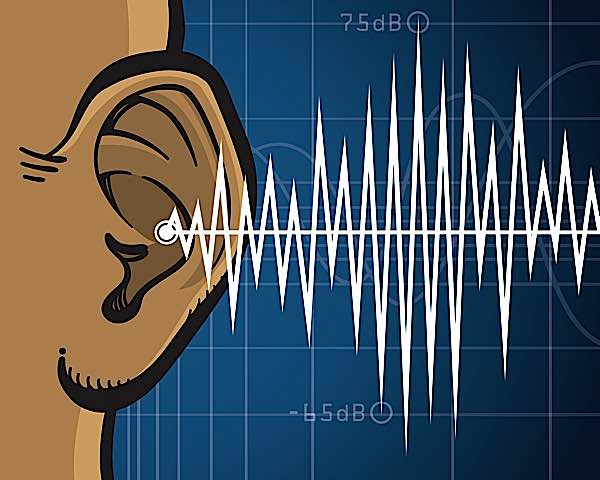
The Physics of Sound: A Cosmos of Rhythms
“The great rhythms of the cosmos are also revealed through modern physics,” writes Thomas Ashley Farrand in his book Healing Sounds.
In a near-Buddhist-like statement (particularly in its reference to emptiness), George Leonard writes in The Silent Pulse, about the vastness of space that composes what we call matter: “We can see the fully crystalline structure of muscle fiber, waving like wheat in the wind, pulsing many trillions of times a second… As we move closer to the nucleus, it begins to dissolve. It too is nothing more than an oscillating field [that] upon our approach dissolves into pure rhythm. Of what is the body made? It is made of emptiness and rhythm.” [13]
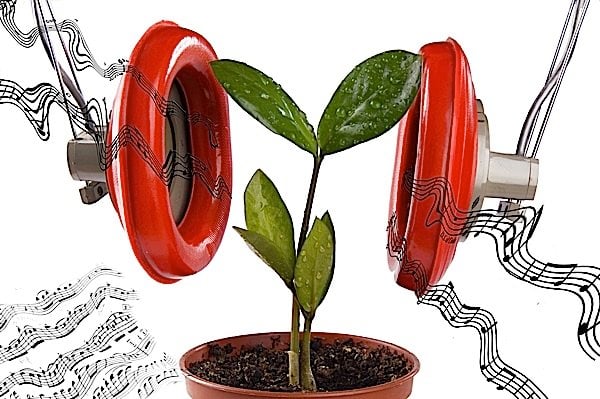
Synchronicity of Self-Created Sound
“It’s also been found that self created sounds such as chanting will cause the left and right hemispheres of the brain to synchronize,” said Jonathon Goldman, author of The 7 Secrets of Sound Healing. “Such chanting will also help oxygenate the brain, reduce our heart rate, blood pressure and assist in creating calm brainwave activity. In addition, listening to certain chants has great beneficial effects.” [10]
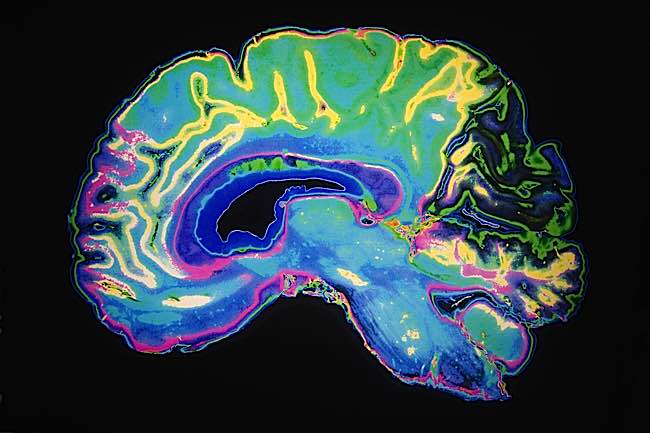
References to mantra’s benefits are common in various psychiatry and medical projects, papers and journals. In one project, they concluded through research that OM chanting calmed the stressed mind. [2] In yet another, they concluded that the Gayatri Mantra helped with tinnitus, Alzheimer’s and improving motor skills in Parkisonism. [3]
Change Molecular Structure? Can Sound Really Do That?
“There is no question that sound can alter molecular structure,” Jonathon Goldman explains “In the 1960’s, a medical doctor named Hans Jenny conducted experiments that showed that sound was able to actually create form in various substances such as plastics, plastes, liquids and water. He would place these substances—powders, etc. on a steel plate and then using a crystal oscillator, vibrate these plates with sound. The various substances took on the most organic looking shapes—they look like microscopic organisms or underwater life. Quite astounding.” [10]

Putting aside molecular effects, the entire field of Sonochemistry is concerned with “is concerned with understanding the effect of ultrasound in forming accoustic cavitation in liquids, resulting in the initiation or enhancement of the chemical activity in the solution.” [12] For example, this method can be used to destroy pollutants in water, or even to enhance cleaning (ultransonic cleaning). Sound profoundly effects all liquids. This lends some credence to the notion that sound also effects humans, animals and plants — which are mostly water. This is not at the molecular level, but a result of cavitation. “The chemical effects of ultrasound do not come from direct interaction with molecular species. Instead, sonochemistry and sonoluminescense arises from acoustic cavitation.” [11]
The simplest and most effective mantra for daily chanting is the “Compassion Mantra” of Avalokiteshvara:
Om Mani Padme Hum
Chant Om Mani Padme Hum along with the wonderful voice of Yoko Dharma
Why Speech and Mantra Can Physically and Mentally Change Our Lives
Speech and language consume significant portions of our brain. It is reasonable to assume — and many Neuroscientists make this point — that sound and language influence the majority of aspects of our lives. In fact, Neuroscientist Mark Changizi, in his intriguing book How Language and Music Mimicked Nature and Transformed Ape into Man, hypothesizes that when we hear certain sounds we tangibly experience those events — for example, a scream brings instant feelings of tension and fear. [5] Critiquing the book, The Scientist magazine wrote that Changizi demonstrates a “…simple but striking premise to show how language and music…harness our brains.”

When we read a novel, we ourselves become a part of that story. Language and speech has that kind of power. Hearing the sound of a coyote on a lonely, dark night can make us feel irrational fear. The sound of a car crash triggers adrenalin in our bodies. The purr of a cat soothes and relaxes us. The laugh of a baby makes us smile. Hate speech inspires hate. Kind words generate compassion. It is reasonable to propose — and some cognitive scientists have — that mantra also has physical and emotional effects on our body that can even influence our health.

Transformative Energy from Sound
“Mantra meditation is not only something one practices, but a radical re-envisioning of ourselves, our lives and our ability to create the future we desire,” writes Thomas Ashley-Farrand in his book Mantra Meditation. [6] He adds, provocatively, “Mantra meditation is not magic, but the results can be magical.”
For example, the effect of mantra on growth of crops, for example, is widely reported and backed by research from the China Agricultural University. We reported on this in Buddha Weekly: “Buddhist Mantras Help Crops Grow — Increase Output by Fifteen Percent; Studies Reveal the Power of Mantras to Help Plants — People.” >>
In this reported news story, farmers in Fujian province increased crop yield and grain size by placing loud speakers in the fields playing repetitive Buddhist mantras. Nearby crops, out of reach of the sound mantras, “struggled with pests and suffered much reduced yield.” The researchers concluded, ” Although it’s well-established that some types of music do improve plant growth, normally assumed to be a sound-wave stimulation, mantras are particularly efficacious.”
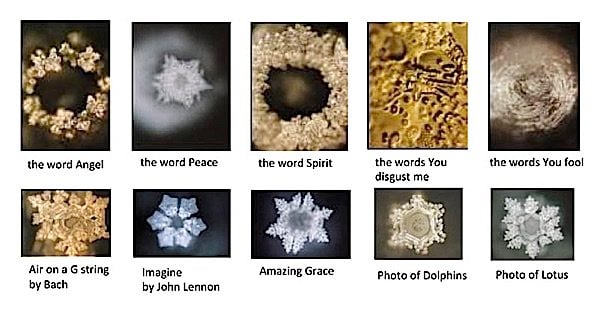
Stress reduction and healing benefits of meditation are well accepted benefits of mantra. Putting aside faith and spiritual reasons, how is it possible, that a mantra can transform energy? Ashley Farrand proposes: “Repeating any sound produces an actual physical vibration. Nowhere is this idea truer than in Sanskrit mantra. When chanted out loud or silently, mantras create a single, powerful vibration… Over time, the mantra process begins to override and absorb all the smaller vibrations, which eventually become subsumed within the mantra.
Effect of Mantras on Human Beings — US National Library of Medicine
The effect of mantra on plants, living beings and humans is well documented and supported by research. The US National Library of Medicine has a notable abstract titled, “Effect of Mantras on Human Beings and Plants” in which: “The author during his various experiments on plants found that these from the stage of seedling to the maturity are effected by certain types of sound waves, especially the Mantras. This study reveals that the plants have shown a positive response to this type of particular sound waves regarding the growth. their efficacy in curing the diseases etc.” [7]

In part, some researchers assume this benefit to be sound frequency’s effect on water. The human body, plants, and animals are mostly water. Researcher Maseru Emoto published findings in a peer reviewed journal (Journal of Scientific Exploration) containing results of experiments on water. He photographically demonstrated the effect of mantras and sound on water with striking results. Ice crystals in water exposed to negative sounds or thoughts created predictable and negative formations, while water exposed to mantra, prayer or positive thoughts rendered beautiful and striking images. While scientists are divided on support for hs work, in part due to insufficient controls, no one disputed the general conclusion that sound can negatively or positively impact humans and plants — beings made up mostly of water. [8]
Sankrit’s Unique Sound Vibration
Sanskrit language in particular has been demonstrated to be more predictably impactful on body and mind. Most mantras are Sanskrit. This may be due to the ancient roots of Sanskrit, the mother of all languages (most modern languages evolved from Sanskrit (with the exception of indigenous languages of America, Africa and Australia). [9] In part the impact of ancient Sanskrit mantras on our unconscious minds, as suggested by Carl Gustav Jung. Sanskrit is also very rhythmic and, to some extent, mimics nature’s sounds — which have been proven in numerous studies to have a profound impact on our minds. (For example, the call of a loon, or the howl of a wolf evoke specific emotions in humans — primitive memories stored in our subconscious mind.)

“The gist of what they convey is that the universe at the physical and subtle level is composed of fifty vibrations,” writes Thomas Ashley Farrand in Mantra Meditation. “Collectively these vibrations are called the Matrika — the Mother… the spanda (vibrations) that have constucted the universe we inhabit.” Putting aside the spiritual thrust of that statement, it seems clear that Sanskrit contains within it, representative frequencies that can interact with our bodies and minds.
NOTES
[1] Annual Review of Nursing Research, Volume 32, 2014, page 80, Patricia Watts Kelley, Patricia Watts Kelley, PhD, RN, FAAN, Christine Kasper Springer Publishing Company, Sep 23, 2014
[2] The Corsini Encyclopedia of Psychology and Behavioral Science, Volume 3, edited by W. Edward Craighead, charles B. Nemeroff, John Wiley & Sons, Nov 11, 2002 – Psychology
[3] “Time-Frequency Analysis of Chanting Sanskrit Divine Sound “Om” Mantra.
[4] “Mantra, Music and Reaction Times: A study of its applied aspects.”
[5] How Language and Music Mimicked Nature and Transformed Ape into Man, Mark Changizi, BenBella Books (2011), 216 pages, ASIN B005ERZLE4
[6] Mantra Meditation — Change Your Karma with the Sacred Power of Sacred Sound, Thomas Ashley Farrand, Sounds True, Inc. Published 2010 ISBN 978-1-59179-783-8
[7] NCBI Resources: Us Library of Medicine National Institutes of Health
[8] The Hidden Messages in Water, Masaru Emoto (New York Times bestseller)
[9] Professor Dean Brown.
[10] Quoted from Shift Your Life, interview with Jonathan Goldman.
[11] The Chemical and Physical Effects of Ultrasound, Kenneth S. Suslick
[12] Sonochemistry https://en.wikipedia.org/wiki/Sonochemistry
[13] The Silent Pulse: A Search for the Perfect Rhythm that Exists in Each of Us, Gibbs Smith (2006), ISBN 978-1423601227
15 thoughts on “The Science of Mantras: Mantras Work With or Without Faith; Research Supports the Effectiveness of Sanskrit Mantra for Healing — and Even Environmental Transformation”
Leave a Comment
More articles by this author
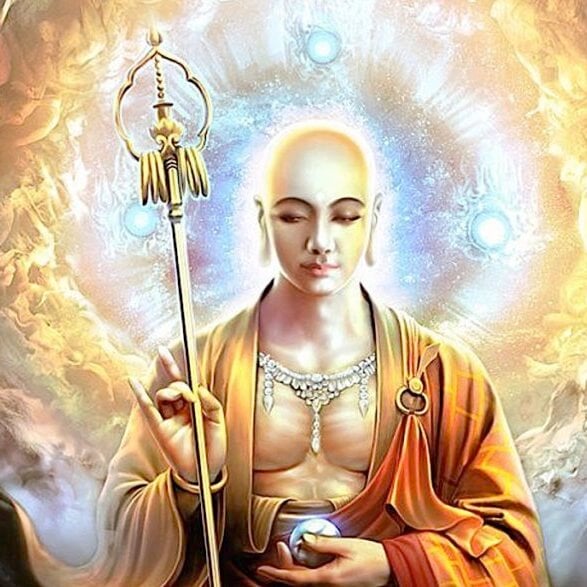
Lama Zopa Rinpoche and other teachers recommend Kṣitigarbha mantra and practice for times of disaster, especially hurricane and earthquake, because of the great Bodhisattva’s vow

Profound simplicity of “Amituofo”: why Nianfo or Nembutsu is a deep, complete practice with innumerable benefits and cannot be dismissed as faith-based: w. full Amitabha Sutra

The Science of Mantras: Mantras Work With or Without Faith; Research Supports the Effectiveness of Sanskrit Mantra for Healing — and Even Environmental Transformation
Search
Latest Features
Please support the "Spread the Dharma" mission as one of our heroic Dharma Supporting Members, or with a one-time donation.
Please Help Support the “Spread the Dharma” Mission!

Be a part of the noble mission as a supporting member or a patron, or a volunteer contributor of content.
The power of Dharma to help sentient beings, in part, lies in ensuring access to Buddha’s precious Dharma — the mission of Buddha Weekly. We can’t do it without you!
A non-profit association since 2007, Buddha Weekly published many feature articles, videos, and, podcasts. Please consider supporting the mission to preserve and “Spread the Dharma." Your support as either a patron or a supporting member helps defray the high costs of producing quality Dharma content. Thank you! Learn more here, or become one of our super karma heroes on Patreon.
Josephine Nolan
Author | Buddha Weekly
Josephine Nolan is an editor and contributing feature writer for several online publications, including EDI Weekly and Buddha Weekly.












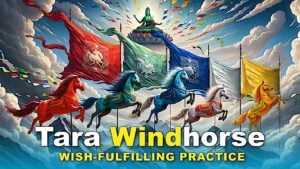



i want to ask somthing if im listening to the mantra not from my heart its okay i mean i just i want love succsses but i dont have mood so its okay?
Mantras are always beneficial. Sometimes I chant mantras when doing incidental things (driving, chores) so it’s not my main focus; other times it’s my practice and I’m fully focused.
So it’s okay what I ask?
ONLY FOR OPEN MANTRAS that do not require initiation (such as Medicine Buddha mantra, Tara Mantra, Chenrezig mantra). You asked if it’s okay to chant mantras or listen to mantras even when you don’t have the mood. If that’s the case, then yes, Mantras are good even if you’re not in the mood. They may actually put you in a better mood for practice. BUT — what mantra are you asking about. I’m referring only to authorized mantras. Om Mani Padme Hum is good for anyone (compassion mantra). Om Tare Tuttare Ture Svaha (for protection or even help in life), Om Bekhandze Bekhandze Maha Bekhandze Bekhandze Randza Samundgate Svaha (Healing). BUT– higher tantric mantras (like Vajrayogini, or wrathful deities) are NOT OKAY for you to just chant or listen to if you don’t have empowerment or teachings from a teacher of lineage. In other words, stick to the popular mantras that don’t require any teachings: Om Tare Tuttare Ture Svaha (protection or help from Tara), Om Mani Padme Hum (Compassion and Metta loving kindness) Om Muni Muni Mahamuni Svaha (Shakyamuni Buddha), OM AH HUM (body speech and mind). If you’re talking about wealth practices, etc, then NOOO — these are deity practices requiring teachings (so you udnerstand them) and empowerment (initiation.)
if i just chant mantras i will still get the benifets?i mean with no purpose
The main benefit is planting the seeds of compassion and wisdom in your mind.
Are you asking from a Buddhist point of view? If so, mantras shouldn’t be treated without respect: Buddhist mantras are sacred Buddha Dharma, and should be respected. They are sacred sounds. They plant the seeds to our future Enlightenment on our mindstreams. In Buddhist and Vedic tradition, the word translates as “mind protection” and they help keep our mind focused on our intention (healing, compassion, etc). It is our minds that transform — it’s not magic. So, for example, a healing mantra, even if you’re not properly concentrating, can effect the mind, and as you know, the mind has powerful health impact.
For instance, “It’s also been found that self created sounds such as chanting will cause the left and right hemispheres of the brain to synchronize. Such chanting will also help oxygenate the brain, reduce our heart rate, blood pressure and assist in creating calm brainwave activity. In addition, listening to certain chants has great beneficial effects.” — Johnathon Goldman Tantra Of Sound. This is from this feature in Buddha Weekly: https://buddhaweekly.com/157/ We have several features on mantra, which I’d suggest reading.
So there may be a “sonic” benefit (exclusive of the mind benefit) as outlined in this article you are commenting on (where anecdotally mantra benefits plants and animals who can’t comprehend the mantra), so there may be some benefit this way. Zopa Rinpoche often says that mantra chanted to animals “plant the seed” of future Enlightenment in their mindstreams (even though they don’t know what mantra is). Likewise, it plants the seed in our own minds. There have been many studies where plants grew faster when mantras are played. There are countless benefits to all sentient beings, to chanting or listening to the open mantras (like Chenrezig, Tara and Shakyamuni.)
I wanted to ask if it’s okay to listen to the mantra I will without open heart do I still get the benefits?
Generally listening to mantras is positive. Lay Tibetans, for example, will go to higher Tantric pujas (or Tsog offerings) (for example Tsog on Dakini day, or Hayagriva Puja once a year at Sera Jey monastery) but they do not participate or recite mantras (unless they have permission).
It’s generally beneficial to hear them. The old saying is “it plants the seeds of Enlightenment on your mindstream” — which may flourish in the future. Of course it’s always beneficial to listen to compassion or healing mantras, such as Green Tara — OM TARE TUTTARE TURE SVAHA — or Avalokiteshvara (Guanyin) — OM MANI PADME HUM — or Medicine Buddha — OM BEKHANDZE BEKHANDZE MAHA BEKHANDZE BEKHANDZE RANDZA SUMUNDGATE SVAHA. These three you can also recite without empowerment. Metta, In kindness, Lee
Hey thanks a lot for sharing a Wonderful Article. I’ve been trying to practice Meditation from almost 7 months now. And I would just like to know one thing:
Can we also use Positive Affirmations as Mantras? Or Affirmations will not be counted as or help as Mantras?
Please suggest
Hi Jenny, Many people do. Positive affirmations work. The principle isn’t exactly the same. Affirmations are positive reinforcing “programming” of your own mind — and certainly, mantras are as well. However, mantras effectiveness has been shown in various studies to transcend its meaning or even just the value of positive programming. A recent story by Dr. Deepika Chamoli Shahi, PhD. in Buddha Weekly synopsizes an empirical study comparing “any old” repeated phrase to repeating Manjushri’s mantra. Manjushri mantra — he’s the Buddha of Wisdom — was proven to more strongly enhance cognitive function and memory as compared to affirmations of non-mantra repetitions. That story is here:
https://buddhaweekly.com/cognitive-research-om-ah-ra-pa-cha-na-dhi-manjushris-arapachana-mantra-proven-to-enhance-cognitive-functions-to-a-significant-degree-versus-non-spiritual-tongue-twisters/
Another story reported on a crop experiment, where Om Mani Padme Hum (mantra) was played to crops in one field while nothing was played in the other (identical circumstances: soil, water, environment) — the crop exposed to mantra strongly outgrew the other field.
In other words, it would seem that positive affirmations of any kind are psychologically and mentally beneficial, but mantras, notably Sanskrit, are far more effective. In kindness, Lee
Dear Lee,
Thanks a lot for your kind response and sharing this wonderful story / post.
I’m really honored.
Thanks & have a Blessed Day ahead.
Regards,
Jenny
Wow… So beautiful post. Thanks for sharing.
I’ve been using Bob Proctor Mantra on a regular basis:
“I am so Happy & Grateful Now that… Money comes to me in Increasing Quantities on a Regular Basis…”
One of my first chants that I ever heard was 7-8 years ago Gayantri Mantra and literally I cried the entire time I was listening, it touched my soul on such a deep level, I had no idea the meaning at that time , then second was Mahamrityunjaya Mantra when I certified in reiki, that too was so highly vibrational that touched my soul , and that’s where I entered into the world of mantras, I feel that mantras found me rather then finding them, since i discovered them I felt deeply that mantras were a part of myself somehow, I have to resonate with the mantra, not all mantras speak to my soul.
Sometimes I chant one mantra and sometimes another. I mean I have in total 3 mantras that I like for example OM Mani Padme Hum or sometimes the Green Tara Mantra
So, is that okay if I chant whatever I want to or do I have to just stick with one mantra only all the time?
Hi Jenny, The more you chant the better:-) You don’t have to focus on only one mantra, unless you’re trying to align with that mantra; you can certainly chant many different mantras each day. Om Mani Padme Hum and Om Tare Tuttare Ture Soha are powerful for anyone to chant any time. In kindness, Lee